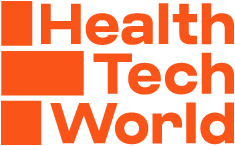
Catherine Davies is managing partner of Monticle, which was created to help health tech firms to grow their revenues, make the right connections within the NHS and identify the best NHS organisations to partner with. Here she speaks to Health Tech World about the current climate for health tech pioneers looking to access NHS opportunities.
HTW: The prevailing narrative is that the pandemic has speeded up the process of getting new tech into the NHS, and increased the openness of trusts to work with health tech entrepreneurs. Is this how you’re seeing it on the ground?
CD: “During the pandemic, people across the healthcare eco system had to change the way they worked really quickly in response to covid. Many NHS staff had to start working from home for the first time and there was a huge change in patient care, in terms of patients being seen virtually. In Merseyside, for example, incredible work has been done on virtual wards where people have been able to access care remotely.

Catherine Davies, Monticle.
People have been talking about this for years, but then it suddenly happened really, really quickly during the pandemic. The problem is, however, that many NHS staff are now burned out and overwhelmed and struggle to deal with the number of innovative offers that have come forward.
It can therefore be a struggle for NHS teams to have the bandwidth to look at all the technologies that they are invited to consider and to figure out whether or not they’re a good fit. So, in some ways, I think it’s become harder for companies to partner with the NHS, because its people are just so busy and overwhelmed.
How do you think this situation will play out in the next 12 months?
Some areas are a key priority for the NHS at the moment, including reducing the number of people waiting for elective care. There are more than six million people waiting for routine operations like hip and knee replacements and the NHS is really focused on helping people get the treatment they need as soon as possible. I think we’re likely to see more innovation around looking at the data on people waiting, and then trying to prioritise those in most need.
So, data-driven innovation could play a major role in reducing waiting lists in future. What have been the barriers so far in enabling this to happen?
Currently, somebody will see their GP with knee pain, for example, and the GP might then think that the person needs a knee operation so will make a referral to an NHS hospital that offers knee ops. But the person could be waiting for a many months to have their outpatient appointment with a consultant; and when they get there, the consultant might decide that actually they don’t need an operation, they need something else like physio or perhaps they have a different problem that needs to be dealt with first.
At the moment, the person is just waiting to be seen whenever there’s availability with the consultant. And until they arrive in the hospital and get accepted onto the list, they are not really in a treatment pathway. There is an opportunity for companies that can help patients access care while they’re waiting.
This could include support with a debilitating mental condition or mobility issues, for example. If your mental health starts to deteriorate, you can put on weight if you’re not able to exercise. Companies that are able to help people while they’re waiting for treatment, such as online physio providers or those with pain relief solutions, are interesting at the moment.
We’ve also heard a lot about the backlog and delays in cancer care. How is innovation playing a role here?
This is another big NHS priority. A lot of cancer diagnostics have been delayed because of the pandemic, sometimes because people themselves didn’t want to go to see their doctor during the pandemic; or simply because, despite the best efforts of the NHS, resources were taken up caring for patients with covid. There have been some interesting developments, where companies have been looking at the profiles of people coming through for cancer screening and then trying to prioritise them so that they can differentiate between people who are at high risk, and those at lower risk, and then see the high-risk people sooner.
The number of digital health apps and platforms has exploded since the pandemic began, with some proving more successful than others. Do you think growth in this market is sustainable?
It’s definitely become a very busy space, with a lot of investment and enthusiasm. I know that my NHS contacts are really looking for companies that have a track record in the NHS, before starting to work with them, and I think that’s because a lot of people have good ideas, but they perhaps don’t necessarily appreciate how complex the NHS actually is. If you do get your first NHS client, that’s why it’s so important to do a good job for them – to establish good relationships and credibility and then build on that success to find more NHS partners.
What advice do you have for health tech firms striving for that first NHS win?
There are some great places where innovators and NHS organisations come together, such as TheHill, which is is an innovation catalyst, embedded within Oxford University Hospitals NHS Foundation Trust. They have a process for facilitating the adoption of digital innovation locally.
Obviously health tech firms can keep an eye out for opportunities and start having conversations with NHS trusts to really understand the problems that people are trying to fix in the system, and to start building relationships. You have to share the values of the NHS and you have to be patient. It’s not a sector for people who are in a hurry to build and exit a company. But if you can be patient, and take your time to understand what’s happening on the ground, and you want to make it work, then there are definitely success stories.
What other unmet needs, challenges and opportunities do you see within the NHS that health tech firms can address?
A huge problem for the NHS at the moment is staffing, with a shortage of nurses, doctors and others in the system. I’m seeing a lot of staffing solutions coming through, and they are definitely needed. Apps that help NHS staff manage their health and wellbeing have struggled to gain traction but those related to recruitment, for example, are interesting. One such solution can reduce the time it takes from making a job offer to actually getting someone in post using clever automation.
Without it, it could take up to six months to get a new doctor or nurse permanently into post which, when you’re short staffed, is asub-optimal. In terms of health tech investors, I think they are interested in data and how it is collected, used and repurposed. I’m also seeing quite a lot of interest in prevention – early-stage interventions that stop people getting sick in the first place, since the health system is struggling to keep up with demand.
Investors seem enthusiastic about finding solutions that help people to manage their health and wellness better, so they don’t need to go into the system. There are also some really interesting technical developments in personalised medicine. Ori Biotech, for example, is one company doing interesting things in cell and gene therapy manufacturing to help people with cancer.
Prior to setting up Monticle, Catherine Davies held executive level roles within Monitor and its predecessor body and worked for a high performing NHS Foundation Trust. She has overseen many NHS acute trust mergers, run investigations into purchasing decisions and carried out NHS market studies. She is a member of the Health Tech World Thought Leadership Panel. Follow her updates here.





